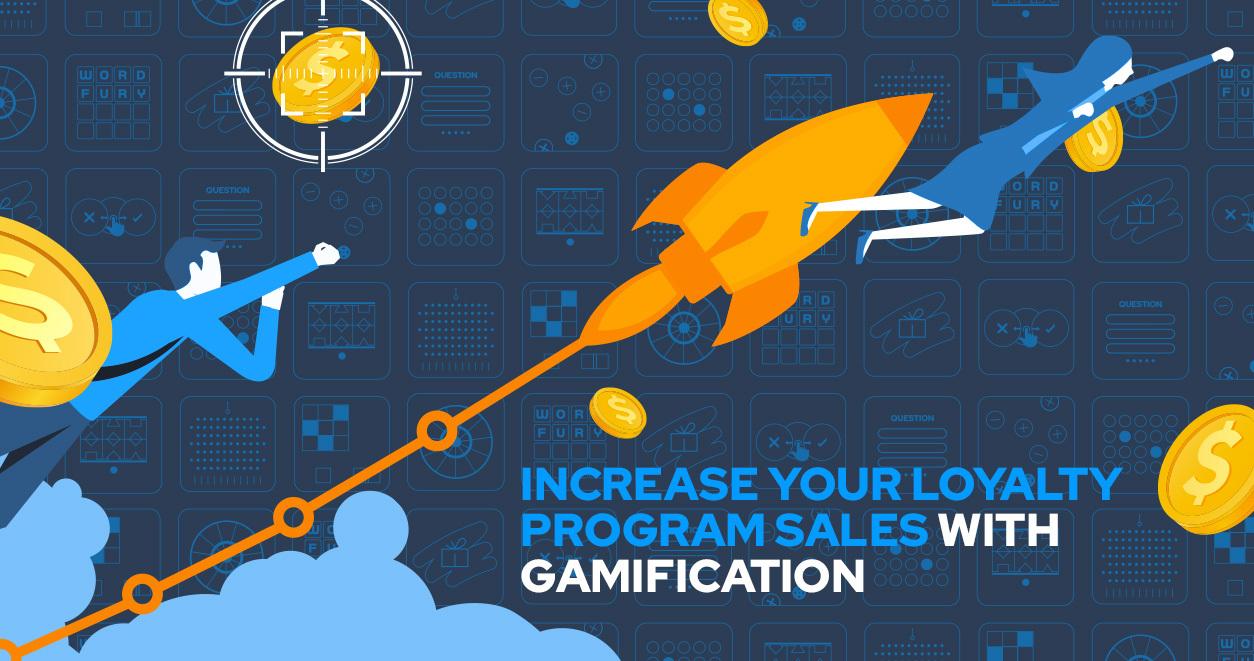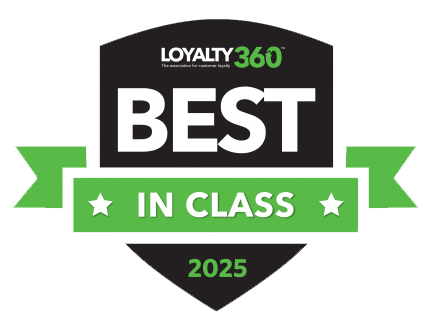There’s no denying the pandemic changed how consumers shop, shifting the dynamic from brick-and-mortar stores to scrolling online product pages. In fact, e-commerce sales rose 35% year over year—in 2021, they were 30% higher than in pre-COVID years.
As online shopping has grown in popularity, customers are more eager than ever to search for the best deals, and brand loyalty has shifted. Shortages in the supply chain meant that in 2021, 60% of consumers had to deal with items being out of stock, and only 13% waited until the product was available. In the end, 39% of shoppers opted for different brands or products, and 32% found the items they sought elsewhere.
But using gamification in the retail industry, companies can help negate this shift by providing clever, engaging ways for brands to grab customers’ attention and help regain loyalty.
Keep reading to learn how some of the biggest brands in the industry have incorporated gamification in gamification in retail and the successes that followed!
The Benefits of Gamification in Retail
How can gamification improve business for retailers? These gamification-in-retail examples are just a few of the tactics that give retailers an edge over the competition.
Enhance the Customer Experience Both Online and In-Store
There’s a new popular shopping trend in which 60–70% of consumers research online and purchase in-store, or vice-versa.
IKEA encapsulated this perfectly through its VR experience. Using VR, online customers could walk through an IKEA store and look at different furniture pieces, fabric styles, and more.
This VR experience catered to shoppers who wanted to research online before purchasing while personalizing their shopping experience.
Promote Brand Awareness
Whether it’s called “banner blindness” or “ad blindness,” many people automatically divert their attention from areas where they expect ads to be waiting.
This is why the mattress company Casper used gamified ads on the New York subway. The ads featured riddles about sleep for people to solve, with the answers displayed on the company’s website. Not only did these ads capture the attention and curiosity of subway riders, but they also increased website traffic.
Increase Sales and Revenue
Gamification increases sales by engaging consumers, leading them to spend more money at your store. A perfect example is when CataBoom partnered with Warner Brothers (WB) and Walmart to promote Batman v Superman: Dawn of Justice.
Via store signage and digital ads, consumers were challenged to “Choose Your Hero” through a series of games (including spin-to-win and puzzles) to receive exclusive rewards from WB.
Offering sweepstakes and instant win prizes, the campaign saw increased sales and twice the engagement compared to previous non-gamified campaigns.
Provide Insight into Customer Demographics
But, collecting customer data can be challenging, as they are increasingly protective about sharing their personal information. That’s why it’s crucial for retailers to ask for information in fun, interactive ways.
DSW used the fact people love quizzes to learn about their female shoppers with their “Which Brand Are You?” quiz. Not only did this work as an interactive advertisement, but it gathered personal information in a manner that didn’t scare off consumers.
Improve Employee Satisfaction
Store-level employees are an extension of a retailer’s brand, so it’s essential that they feel a part of the business. Gamification is an easy way to increase employee satisfaction and investment.
T-Mobile used gamification to improve its employees’ customer service skills by creating T-Community. This all-in-one platform allowed customer service teams to learn more about products and services. A leaderboard allowed employees to see where they ranked among their peers, prompting them to earn points and badges for using T-Community.
T-Mobile awarded 187,000 badges within the first six weeks while seeing monthly customer satisfaction improve.
Gamify Training for Employees
As mentioned before, employee engagement is crucial for a good customer experience. Why not training? Gamification in the workplace has been proven to make new employees more engaged, thereby likely to perform better.
Walmart developed a game called Spark City in 2019 to help train department supervisors. Players would enter a simulation to run the dry goods grocery department before advancing to a second level for the lawn and garden department. The game quickly reached 104,000 downloads from Walmart employees and others and is still available in the App Store.
Strategic Ways to Implement Gamification to Boost Customers’ Retail Experience
If you’re interested in creating retail games for your customers but aren’t sure which tactic will get the most engagement, here are some examples that have worked for other businesses:
Gamified Apps
In 2021 alone, most people spent at least five to six hours on their phones daily. Take advantage of this by creating an app for your store (if you haven’t already) and gamify it.
Sephora's gamified shopping campaign “Swipe it. Shop it.” capitalized on how easy and addictive Tinder’s swiping system is to encourage sales. They showed users different makeup looks, and players could decide which ones they preferred. If a player did like a look, the app showed which products were used to create it.
Not only was this campaign fun (and successful), but it also made the user’s shopping experience easier. CataBoom’s new SwipeIt game mechanic provides an on-trend solution to create this same type of experience.
Retailtainment
Retailtainment is the idea of combining retail and entertainment to create a better experience for customers.
T.J. Maxx used gamification to create retailtainment in-store and online with their Maxximize campaign. The store created six different pop-up installations where people could win the contents by correctly guessing the combined cost of everything. Players had to comment on videos that featured the products or use the hashtag #maxximizing on Instagram.
This campaign did a great job spreading brand awareness, but it also engaged customers to find these pop-ups and browse the goods to try to win the bundles.
Loyalty & Referral Programs
Loyalty and referral programs encourage people to keep coming back to your store time and time again.
Victoria’s Secret PINK took their basic loyalty program—which contained standard features like earning points through purchases and getting prizes—a step further. They created exclusive events and contests and encouraged their members to get friends to join for additional rewards.
Additionally, loyalty members who use the PINK app got access to exclusive games and quizzes, encouraging even more engagement. This program created a constant stream of people coming in and out of stores, making multiple purchases.
Augmented Reality
Augmented reality (AR) meshes the real world with the virtual. This tactic is especially popular with retailers because it can help customers try on clothes more easily. In fact, Macy’s used AR for that very reason.
In 2010, Macy’s Magic Fitting Room, a 72-inch mirror display, allowed users to superimpose clothing onto their images. This AR program avoided the need to go into a fitting room while allowing users to share their looks on social media for likes.
While that was a decade ago, Macy’s is still working with AR companies to make the virtual fitting room to make it more accessible.
Let CataBoom Elevate Your Gamification in Retail Game
As gamification in the retail industry becomes more common, staying with the times by utilizing these impactful mechanics is essential. By partnering with CataBoom, any retail business can create fun, engaging experiences for customers and employees!
And CataBoom is the only gamification company that allows clients to brand the entire process from start to finish. Our Catapult platform features over 200 skinnable, customizable games, plus the ability to integrate instant wins, sweepstakes, and offers. Schedule a demo to see how we can help!








